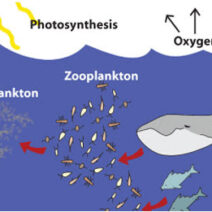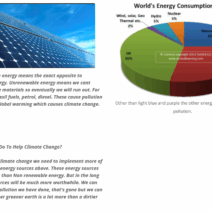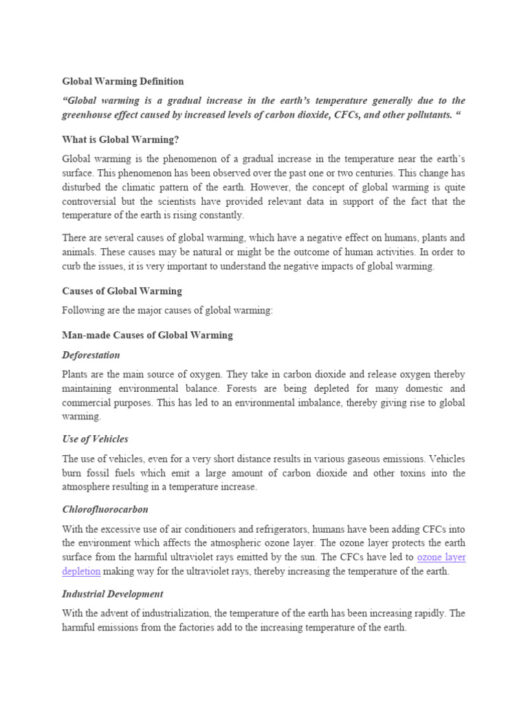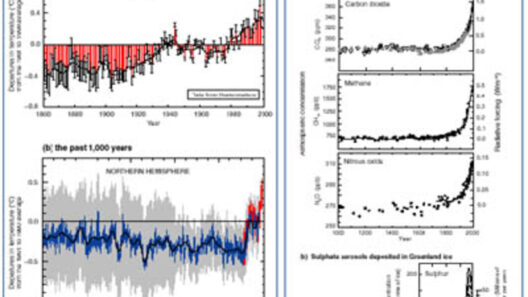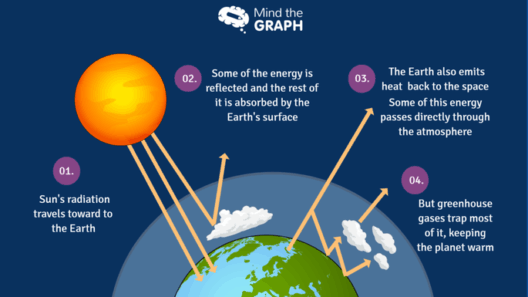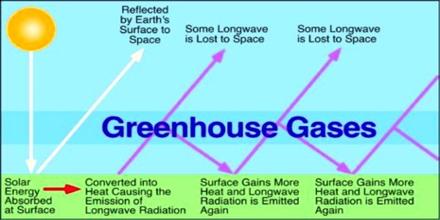Have you ever gazed at the sky on a warm day and wondered why it feels warmer than it did just a few decades ago? What if I told you that an invisible shield around our planet is responsible for this warming phenomenon? Yes, I’m talking about the greenhouse effect! This process is not just a scientific curiosity; it plays a pivotal role in determining Earth’s climate and, consequently, our future. It’s crucial to delve deeper into how this mechanism operates and what it means for our planet.
The greenhouse effect can be a curious puzzle, but let’s piece it together. To understand how greenhouse gases affect Earth’s climate, we need to explore the science behind it, the sources of these gases, and the implications for our world.
Understanding the Greenhouse Effect: A Meteorological Marvel
The greenhouse effect occurs when certain gases in Earth’s atmosphere trap heat from the sun. When sunlight reaches Earth, the surface absorbs it and radiates it back into the atmosphere as infrared energy. However, not all this energy escapes into space. Greenhouse gases, which include carbon dioxide (CO2), methane (CH4), nitrous oxide (N2O), and water vapor, absorb and re-radiate this energy back to the surface. This natural process warms our planet, allowing it to support life as we know it.
Imagine Earth as a cozy blanket. The greenhouse effect provides that warmth, making our home hospitable. However, just like a too-warm blanket can cause discomfort, an overabundance of greenhouse gases leads to an overheated planet. This phenomenon is known as climate change or global warming.
Sources of Greenhouse Gases: The Culprits Behind the Curtain
Though the greenhouse effect is a natural process, human activities have dramatically amplified it. Industrialization, deforestation, and agricultural practices have all contributed to a significant increase in greenhouse gas concentrations since the late 18th century. Let’s examine some of the primary sources:
Fossil Fuels and Carbon Emissions
Burning fossil fuels for energy is the leading source of CO2 emissions. When coal, oil, and natural gas are combusted for electricity, transportation, and heating, they release massive quantities of CO2 into the atmosphere. This can be likened to pouring fuel on a fire—intensifying an already existing problem.
A Grin and a Giggle: Methane Madness
Methane, while less abundant than CO2, is a far more potent greenhouse gas. Released during the production and transport of fossil fuels as well as from agricultural practices (like livestock digestion) and landfills, methane is over 25 times more effective at trapping heat than CO2 over a 100-year period. Imagine a fluffy cloud of gas that packs an explosive punch to the atmosphere!
Deforestation: The Silent Thief of Balance
Trees play a vital role in absorbing CO2. When forests are cleared for agriculture or urban development, not only is this carbon-storing capability compromised, but the act of deforestation itself releases stored carbon back into the atmosphere. It’s like removing a crucial pillar from a well-constructed building, leading to systemic instability.
The Impacts of the Greenhouse Effect: A Changing Clime
The consequences of an enhanced greenhouse effect are dire and expansive. They manifest in various forms that are already being felt globally. Let’s explore some of these impacts:
Rising Temperatures: A New Normal
One of the most immediate effects of increased greenhouse gases is the rise in global temperatures. Statistical data reflects an increase of approximately 1.2 degrees Celsius since the late 19th century. As temperatures climb, they will lead to more frequent and severe heatwaves, impacting human health, biodiversity, and ecosystems.
Melting Ice Caps: Nature’s Cry for Help
The polar ice caps and glaciers serve not only as magnificent natural wonders but also as crucial components in regulating Earth’s climate. As temperatures rise, these ice masses are melting at an alarming rate, leading to rising sea levels. Coastal communities face the dual threat of flooding and loss of habitat—a situation reminiscent of a ticking time bomb.
Extreme Weather Events: The New Norm
With the escalation in greenhouse gas emissions, the frequency and intensity of extreme weather events, such as hurricanes, droughts, and heavy rainfall, are on the rise. These phenomena challenge human resilience and adaptation, placing a strain on infrastructure and resources. It’s a clarion call for immediate action!
Addressing the Challenge: What Can We Do?
Now that we understand the mechanics behind the greenhouse effect and its consequences, we might ask ourselves: What can be done to mitigate these changes and foster sustainability? Collective action, individual choices, and policy changes can catalyze significant shifts toward a healthier planet.
Renewable Energy: The Bright Path Forward
Transitioning from fossil fuels to renewable energy sources such as solar, wind, and hydropower is vital. These sustainable energy alternatives significantly reduce CO2 emissions while providing clean power to sustain our societies.
Protecting Forests: Nature’s Guardians
Conserving existing forests and reforesting degraded land can help capture atmospheric CO2. Policies advocating for sustainable land use and restoration efforts can bolster climate change mitigation strategies.
Advocacy and Education: Mobilizing the Masses
Engaging communities in dialogue surrounding climate change and fostering a sense of responsibility is fundamental. Environmental education campaigns can empower individuals to make informed choices that support sustainability.
In essence, understanding the greenhouse effect is merely the beginning. It is imperative to recognize the urgency of addressing the catalysts of climate change and promoting solutions. Together, let us work toward a planet that thrives for generations to come, harnessing the power of knowledge as our greatest ally in this endeavor.
